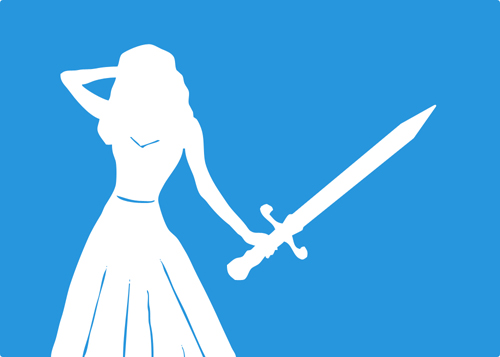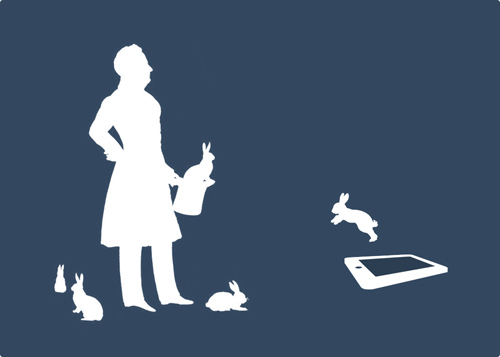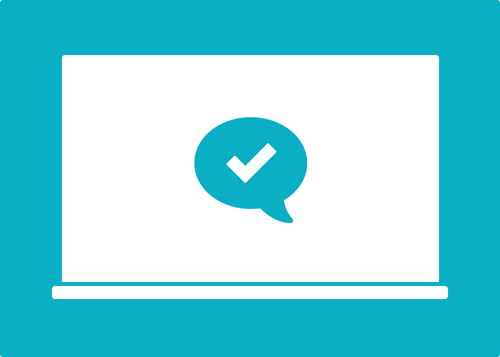Whiteboards, Visions And Banned Words
This article is about design consultancy. It’s about wrangling that client who uses empty sentences like, “We want a snappy, simple experience,” or, “It should be on brand and should really pop.” It’s about commanding the room and setting a vision before moving on to wireframes and pixels.

Any whiteboard is a weapon if you hold it right.
While I’ll talk in terms of consultation, these ideas can be applied to the design phase of any new project. How To Help A Real-Life Knight Achieve His Goals.
Banned Words
I start every consultation with this list on the whiteboard:
- Clean
- Simple
- Fast
- Snappy
- Some
- Most
- Nice
These words are banned. If anyone in the room says any of these words, it means we’ve lost our focus or forgotten that we’re in the room to solve problems. We stop, reframe the conversation, then move on.
Here are three steps I take to ensure that the words above are never uttered in the first place.
1. Set A Vision
The design process can get derailed right at the start by focusing on questions like, “What’s the best thing about our product?” or, “What differentiates our service from the competition?”
Why This Is A Bad Idea
- Real users have families, jobs and tax bills and are quite possibly drunk when they first experience your brand. Put bluntly, people don’t care about your product — yet.
- Real people experience your idea on their terms, not yours.
- Dumb mass marketing doesn’t work anymore; we’ve raised a generation of marketing-proofed humans. (Thanks, Coke.)
Instead, let your audience define the project by explaining their needs to a friend, remembering that your brand is not what you say it is. Your brand is what people tell their friends it is.
"As a ____, I need to ____, so that I can ____."
Let’s assume we’re selling ACME Dragon-Slayer Swords. Our audience might say:
"As a white knight, I need to slay the dragon, so that I can save the princess."

Your brand is not what you say it is, but what your audience says it is.
This is useful because it describes our audience’s impetus and why it’s important to them. However, our user is not yet textured, nor specific enough. We can do better.
2. Narrow It Down
Let’s start with some experiential texture:
"As an inexperienced knight, I need to slay my first dragon so that I can prove my worth to the father of the princess."
Better. We’ve textured our knight, with corresponding depth to his reasoning. Experiment with different textures — such as technical nouns, age, income and geography.
It’s easy to get lost in our idea and forget how it applies to the larger stage, so let’s delve further in time, before and after our idea:
"As an inexperienced knight on my first quest, I need to impress the king, so that I might marry his daughter and live happily ever after."
In doing this, we’re taking our user from his real-world impetus, through our brand and back into real life again. We’ve realized that the dragon-slaying itself wouldn’t actually help a real knight achieve their goals. Might we consider selling ACME Dragon-Slayer Swords by how impressive they are to kings?
Describe the brand from multiple viewpoints. For example, our princess may find dragon-slaying presumptuous. If we discover that she’s a more interesting audience, then put her center stage instead.

Dragon-slaying princesses are DIY champions.
3. Stick To Your Vision
Once a scope is defined, remaining within its constraints is important. Thinking back to our banned words, let’s look at the scope-destroyers:
- Some
- Most
- Nice
The sentence, “It would be nice if some users could X” is almost as dangerous as, “Most of the time our users will Y.” This kind of thinking frays the edges of a good idea until it’s unrecognizable.
That way madness lies. Remove all but undebatable assumptions:
- Narrow down “some users” until you can say “every user.”
- If the client says “most times,” remove fuzzy options until they can say “all of the time.”
- Don’t waste time on “it would be nice” issues if you can fix a “we absolutely must” problem.
For example, earlier we defined our knight as inexperienced.
If anyone starts talking about experienced knights, we’d ask them to rephrase in terms of our defined audience. If we get sidetracked by knights who don’t want to impress kings, we’d jot that down on a “nice to have” list and forget about it entirely.
In The Real World
Here are some practical examples from real-world projects that I’ve led:
- Clarity.io “As a young adult, I want to donate to charity with my Facebook account so that I can share my charitable identity with friends.”
- The Fitzroy Academy of Getting Shit Done “I’ve lost faith in university education. I want an intense, condensed way to skill up and be industry-ready so that I can get out into the workforce soon.”
- OurSay “Australian citizens need direct access to people in power so that they can have an impact on their political system.”
- The Promo Bay “The Pirate Bay needs a way to centralize and sift through artists so that it can decide who to promote on the home page of The Pirate Bay.”
While we’re thinking “real world,” let’s look at the consultation session itself.
Sleight Of Hand
When performing, stage magicians use props and well-practiced patter to better engage the audience. As a consultant, the magic lies in your command of design, while some nuanced expression can transform a banal experience into an engaging one.

One tablet makes you bigger, one tablet makes you smaller.
Practically Speaking
- Keep the vision written at the top of the whiteboard at all times. If anyone gets sidetracked, point at it meaningfully until they quiet down.
- If you feel you personally don’t have the authority to command the room, explain the consultative process up front. People sometimes prefer to trust a well-explained process, especially if they’re older or smarter than you.
- If a client uses terms like “drop-down” or “radio button,” ask them to rephrase without using those words. It’s also a good excuse to assert that the consultation is not about pixels and wireframes.
- Build a personal library of real-world metaphors that explain UX situations. For example, a website that logs you back in without asking is a lot like an automatic door. An HTML prototype is like a car without the engine. Physical examples ground people in reality.
- Your whiteboard marker is a conductor’s baton. This lizard-brain reaction harkens back to teachers in grade school. Note on the board something that a person says that you agree with, and people will suddenly speak on your terms just so you write down what they say.
- Once a vision is established, ask every person in the room whether they agree with it. Put a big tick next to it for each person, in turn. It’s now set in stone, and you can use it as the “bad guy” to settle disputes later.
- Pacing is one of the most important parts of consultation. Set time limits, and don’t be afraid to say, “OK, back to the process.” Consider having a clock in the room.
- Use a banned word, then catch yourself and apologize profusely. It proves you are beholden to the same rules as the client.

Always remember to keep your audience’s impetus in mind.
Further Reading And Experience
I’ve straddled the shoulders of two giants in writing this.
Reading
- The “As a ____, I need to ____, so that I can ____” technique is a simplification of a behaviour-driven development tool. See Bryan Helmkamp’s practical example over on SlideShare.
- I highly recommend watching the “Feedback Without Frustration” video and accompanying article, “How to Run a Design Critique,” by Scott Berkun.
- It may be old school, but a solid understanding of “Cognitive Walkthroughs” in Task-Centered User Interface Design is a good reference point for sticking to a vision.
- The “your brand is what your users tell their friends” idea comes from brand tribalism, another ’90s idea recently popularized by Seth Godin. See his TED talk on the subject.
Experience
You needn’t score a top-dollar client to learn how to deliver solid consultation services. We use these same techniques at work for all of our internal projects.
Try starting your next design sans-Photoshop. Instead, run a two-hour consultation with a coworker. Try again later with a really annoying person who hates your designs. Mixed experiences will help you find your own method in the madness.
Charm is a learned skill.
In Conclusion, Re. Applicability
This style of consultation isn’t so great for fixing large broken systems. It’s better for new projects, with a small audience. It also works for small, distinct portions of a larger problem.
Extending the vision should happen after launch and testing, once you’ve won everyone’s heart.
Or:
"As the design lead of a new project, I need some consultative tricks to keep my clients in line and to craft a concise vision."
Further Reading
- Using Brainwriting For Rapid Idea Generation
- Stop Shouting. Start Teaching.
- Becoming A Better Facilitator
- Lean UX: Getting Out Of The Deliverables Business





 Register!
Register! Flexible CMS. Headless & API 1st
Flexible CMS. Headless & API 1st


